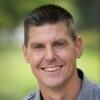Explore all the information on
Dairy cattle nutrition
Welcome to the page about Dairy cattle nutrition of Engormix; a source of knowledge on Dairy cattle nutrition.
ARLINGTON, Va. – July 23, 2020 – The American Feed Industry Association (AFIA) honored two individuals in the animal science field this week at the American Society of Animal Science (ASAS)–Canadian Society of Animal Science–Western Section ASAS virtual annual meeting and tradeshow. Martin Nyachoti, Ph.D., of the University of Manitoba (U of M), received the AFIA-ASAS Non-Ruminant Animal Nutrition Research Award, and Terry Engle, Ph.D., of Colorado State University...
Comments : 1
Recommendations: 5
Most soils in New Zealand are low in Se to various degrees, and an efficient supplementation of selenium is therefore crucial to maintain the reproductive and productive performances of animals. Listen to Triana Parker, Country Manager at BEC Feed Solutions. Trina will share her experience with her NZ customers on the use of Selisseo in ruminants with us. ...
Comments : 6
Recommendations: 6
Luiz Ferraretto (University of Florida) explained the importance of fiber and starch digestibility among other topics, during AMENA 2019 in Puerto Vallarta, Mexico....
Comments : 6
Recommendations: 16
What makes Selisseo® different? How does it work? What are its benefits for cattle? Anne-Sophie Conjat, Global Business Manager Selisseo® answers all these questions....
Comments : 0
Recommendations: 3
As of January 2017, the FDA began a stricter regulation of antibiotics commonly used in the animal-feeding industry. Livestock and poultry producers alike have been accused of overfeeding various antibiotics, largely for growth promotion purposes (i.e., for increased feed efficiency and profitability).
The ones the medical industry and the consumer have been most concerned with are those deemed medically important for human use. The perception is: Various infectious agents that...
Comments : 46
Recommendations: 26
Antonio García, Technical Service Manager Ruminant at Phileo Lesaffre for Latin America, explains the news technologies Phileo has developed in feed formulations for ruminants, during CLANA 2018 in Brazil...
Comments : 18
Recommendations: 2
Many dairy cows in the developed world are now housed exclusively indoors with fewer than 5% of the 10 million lactating cows in the United States having access to pasture during the grazing season. Indoor housing systems are designed to meet biological needs for food, water, hygiene, and shelter, but surveys of public and farmer opinion suggest that people think that pasture access is also important for the well-being of dairy cows. To determine if pasture...
Comments : 3
Recommendations: 3
Introduction
Past research in dairy cattle nutritional management has focused almost exclusively on the nutritive aspects of the diet, resulting in many discoveries and improvements in dairy cow health and production. Despite many advances this field we are still faced with several challenges associated with feeding dairy cattle. Recent field observations suggest that housing and management can play as large of a role as nutrition in the performance and health of...
Comments : 4
Recommendations: 4
Hi, I just want to have information about guar korma. is it used to feed dariy cattle? If yes how many kilos of it should be used per animal? I have heart that it is used by some feed mills in Turkey. But I have another information that it cause milk yield deppression? ...
Comments : 66
Recommendations: 1
Global demand for animal proteins is foreseen to increase by 22% (Figure 1). Thus, one of the main challenges for 2050, in addition to meeting the high expectations in terms of food production, is facing the various issues which threaten food quality and safety, as well as land management and sustainable beef production. This will directly influence how we will raise and feed our animals to meet consumers needs. ...
Comments : 0
Recommendations: 0
Since mid-1980s fertility of UK dairy herds has declined year-on-year as is evidenced by the current calving interval of around 420 days. To put it into perspective, NMR in 2010 estimated the cost of fertility in an average dairy herd of 100 cows was around £25,000 per year. This included lost milk output, excessive culling and attendant veterinary costs. It is argued that genetic selection for high milk production has compromised fertility. Although this...
Comments : 16
Recommendations: 4
1. Introduction In the agricultural areas of Venezuela, specifically in Píritu municipality, the main problem in animal nutrition is the energy component of balanced rations, due to the inadequacies of this nutrient and the high cost per unit of energy produced locally. At present, the demand for items used as ingredients for the production of animal feed, such as sorghum is covered up to 60% with imports, as well as 95% soybeans. Because, on the one hand, the...
Comments : 0
Recommendations: 0
Feeding fat and fat products to dairy cows is common on most, if not all, dairies. Understanding how to properly feed fats and fat products is another story and seems to change daily.
This is especially true as we work to understand the roles various fat components (fatty acids) play in the animal in terms of production (volume and components), health and reproduction.
And while it may not be necessary, let’s remember that fat feeding in the dairy animal is broken into...
Comments : 24
Recommendations: 15
Abstract This paper discusses the definition, methods, advantages and disadvantages of microencapsulation, and identifies the improvements achieved in animal nutrition with the advent of microencapsulation. Microencapsulation is used to improve product bioavailability, delivering nutrients and additives to the digestive tract at varying rates or sites of delivery with an aim to improve animal performance. Several techniques used for microencapsulating feed ingredients will be...
Comments : 0
Recommendations: 3
The optimisation of the use of nitrogen (N) in ruminants diet can be highly valuable in terms of profitability and sustainability of any farm. In this study it has been assessed the use of economical source of nitrogen in combination with natural plant extracts, mainly tannins, which can influence protein metabolism in the rumen. Ruminants can make use of certain non-protein nitrogen (or NPN) compounds, some of...
Comments : 15
Recommendations: 7
...
Comments : 2
Recommendations: 3
Background Carinata (Brassica carinata) is a new oilseed that shows great potential for the Midwest. This oilseed has been selectively bred for high oil concentration ideal for biofuels and bio-oil production. Carinata meal is the co-product resulting from the oil extraction of the seeds. This meal has high protein content (36-48% crude protein), highly degradable in the rumen, and with a total digestibility of the protein a...
Comments : 1
Recommendations: 0
Introduction Proper sampling of ration ingredients and submitting those samples for nutrient analysis to a good lab are essential components of diet formulation. The relative importance of sampling, analytical, and real variation on overall variation in nutrient composition data of ingredients has been discussed at previous conferences (Weiss et al., 2012; Weiss et al., 2014). Sampling variation was an equal or greater source of variation than was real month-to-month...
Comments : 5
Recommendations: 6
Going from the late dry period to early lactation requires an incredible adaptation of the cow’s metabolism. No period of her life is posing more physical and physiological challenges - with important consequences for her health. The energy requirement increases within days by factor 4. Energy intake via feed is not able to follow so the cow gets into a negative energy balance (NEBAL). That means she is starving. This condition can last up to 100 days....
Comments : 3
Recommendations: 2
The addition of yeasts as additive in ruminant diets has favorable effects on microbial population and on the ruminal fermentative indicators. Consequently, health and productivity of animals are improved (Stella et al. 2007 and Doleža et al. 2011). There are multiple products in the world market in which commercial strains of Saccharomyces cerevisiae yeast are employed as activators of ruminal fermentation (Chaucheyras et al. 2004). However, there are not plenty studies showing the...
Comments : 1
Recommendations: 0





.jpg&w=3840&q=75)




.jpg&w=3840&q=75)



















